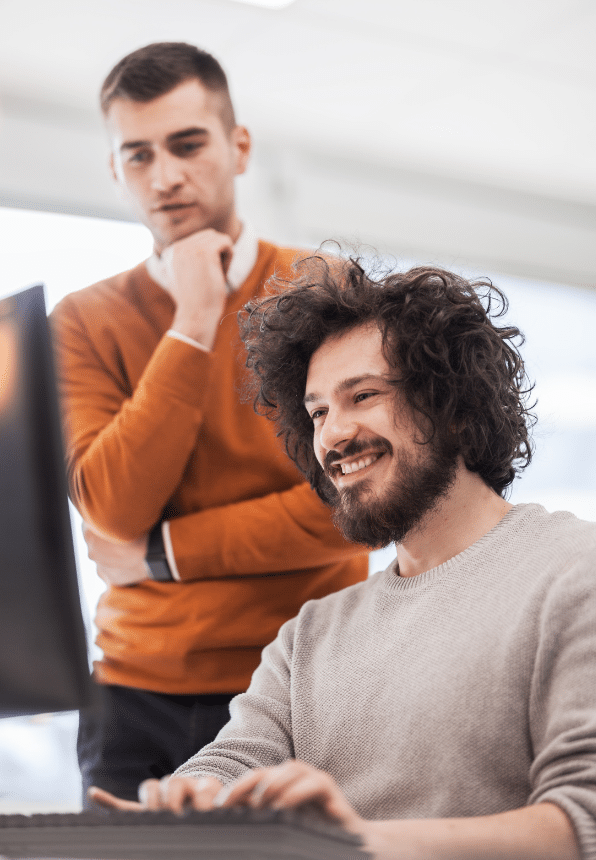In an ever-changing world, companies are constantly looking for new ways to attract and retain talent.
Today, HR data is emerging as an essential asset: data has become an essential element, transforming the way we manage our human resources… Find out more how to make the most of HR data to anticipate your attraction and retention actions to ensure the sustainability of your organization.
The advent of digital technology is gradually breaking down the usual codes of work and human resources management.
85% of the jobs forecast for 2030 do not yet exist, according to a study by Institute for the Future and Dell technologies.
The world is evolving, and changing habits are driving companies to digitize throughHR data analysis. In this context, human resources managers are on the front line, as they are responsible for regulate these high departure rates while optimizing recruitment processes and integration of new employees.
In 2017, The Economist published an article “ The world’s most valuable resource is no longer oil, but data “(the world’s most precious resource is no longer oil, but data). Visit data collection and processing have given rise to two new disciplines:predictive and prescriptive analysis.
The different ways of using HR data
Before delving into the heart of HR data, let’s take a look at the different ways it can be used.
There are 4 types of data exploitation:
descriptive: to provide a snapshot of a situation;
analytical: to help understand causes;
predictive: to create predictions based on hypotheses;
prescriptive: to propose concrete recommendations for a given situation.
Leveraging HR data can help you better meet your challenges in terms of attracting and retaining talent, as well as employee engagement. Indeed, a better understanding of the origin of tensions within the company and their impact on the most stable employees is essential. This reduces the attrition rate and ensures that measures are taken in good time for “at-risk” employees.
The last 2 types of analysis are those that will interest us most in this article in terms of HR innovations.
Innovative ways to measure employee engagement using HR data
Six parameters can be used to quantify employee commitment within a company. The innovation lies in the way the data is collected and, above all, used.
- Employee Net Promoter Score, which answers the question, “How likely are you to recommend this company as a great place to work?”
- Voluntary employee turnover, which focuses on employee-initiated departures.
- Customer satisfaction ratings (CSAT) gathered through formal customer satisfaction surveys, or more informally through conversations or feedback.
- Employee productivity
- Employee absenteeism rate
- Employee satisfaction score
A variety of tools are used to measure employee commitment : commitment barometers, surveys, regular HR interviews and annual social surveys, such as the Great Place To Work survey…
Scott Judd, Head of People Analytics at Facebook, has co-authored an insightful article on employee surveys.
“Employee Surveys Are Still One of the Best Ways to Measure Engagement”, he argues that employee surveys remain a “high-yield” practice for HR.
Today, instead of spacing out the frequency of surveys, many companies are turning to continuous surveys. This method involves gathering employee feedback by asking a single question on a regular basis, known as a “lightning survey”. Most flash surveys work by asking one question a day. It takes a minute to answer, so your employees don’t feel overwhelmed by the task.
The aim is to gather feedback and respect employees’ space and time at all times. No need to bother employees with long questionnaires.
Some companies prefer to launch questionnaires just after “HR highlights” such as salary reviews, annual interviews… which often have a direct impact on employee engagement. This increases the number of responses to questionnaires.
In an ever-changing professional world, employee commitment has become a major issue for companies. Find out in our dedicated article, 3 innovations to implement in your company.
Boosting employee attractiveness and commitment through data science
The world of big data is profoundly transforming the job market and the various existing professions.
In human resources,data analysis to confirm past trends has existed for several years. What is less so, but is beginning to emerge, is theuse of data to build HR strategies.
Data analysis employee engagement measurement systems is a first key to entry. Results are consolidated in real time and accessible to managers and HR. Engagement questionnaires measure the feelings of teams and transform them into concrete actions that sustainably improve QWL.
Applicable in a wide variety of sectors,predictive analysis of human resources data can be used to :
Improving recruitment
A profile adapted to the needs of a position is more committed and loyal, and has a direct impact on the turnover rate. For example, it can also analyze CVs, recognize how often a person changes jobs and calculate the likelihood of them changing again. Visit data science can also understand the types of career paths candidates are likely to follow by analyzing career trajectories across millions of different data points to spot trends.
Optimizing performance
Optimize organizational performance and, at the same time, anticipate demotivation or failure factors.
Anticipate foreseeable departures (e.g. retirement, maternity, etc.) and also statistical ones (e.g. demographic data or trends by business sector, location, etc.).
Ensure the company’s development
Ensure the company’s development with better decision-making: contribute to making the company more attractive and boost employee satisfaction.
Assessing skill levels
Evaluate employees’ skill levels and anticipate skills development: an employee who has greater confidence in his or her personal capital and who is developing skills is more likely to stay with the company.
Anticipating moments of demotivation
By referring to their productivity and objectives, anticipate moments of employee demotivation.
HR data analysis can also be used to assess the skills available within the company, to enhance internal mobility. Visit HR data is based on job-skills matching, which compares the profiles of the company’s employees with vacant or future positions.
All these areas of analysis make it easier to identify the issues that motivate or demotivate employees. The real value of these studies lies above all in the discussion they provoke and the concrete actions they lead to.
Employees are more attached to a company that allows them to evolve and offers them change. It also contributes to employee satisfaction and well-being in the workplace, creating a positive dynamic.
To anticipate the recruitment challenges of tomorrow, it is essential to develop solid adaptation strategies. In our dedicated article, you’ll find the keys to adapting as a recruiter and remain effective in a constantly changing environment.
What are the challenges faced by HR data in improving employee engagement?
Many HRIS systems already allow you to use HR data thanks to the Machine Learning system, to produce a predictive analysis of HR trends.
The use of quantitative data such as age, performance rating or absenteeism rate is rather simple and objective. The difficulty may lie in interpreting qualitative data, such as annual interviews. However, it is essential to make the most of personal data. in order to recruiting the right talent, but also satisfying them to ensure their productivity…
These HR data can be rich in information, but they are also subjective and can vary from one individual to another.
Analyzing this data often requires skills to extract meaningful trends and actionable information. The HR teams therefore need to be trained in the use of these tools to take full advantage of the qualitative data.
However, with the right tools, the right skills and a personalized approach, companies can overcome these challenges and exploit the full potential of HR data to create a more engaging and productive working environment for their employees.
Conclusion
In conclusion, the HR data represents a considerable opportunity for companies wishing to remain competitive in an ever-changing world.
By exploring the different ways in whichHR data can be exploited, we have been able to gain an insight into the ways in which such data can be used. HR innovations can improve talent management, employee commitment and job satisfaction.
The adoption of innovative methods opens up new prospects for human resources.
These approaches not only anticipate the company’s talent needs, but also create an environment where employees feel listened to, valued and encouraged to evolve.
However, it is important to recognize that HR data is not without its challenges… Interpreting qualitative data requires appropriate, personalized support.
At SQORUS, our multi-disciplinary teams in HR Council & Data are at your service to help you make the most of your assets. HR data.
Please do not hesitate to contact us if you have a use case that you would like to test as part of the LAB SQORUS.
HR Data strategy: what if we accelerated?
Imagine a world where the HR function is propelled into a new dimension thanks to the power of data. What if this world were within our reach? Discover how to harness the full potential of HR Data to revolutionize your organization.
Contact
A project? A request?A question?
Contact us today and find out how we can work together to make your company’s digital future a reality.














